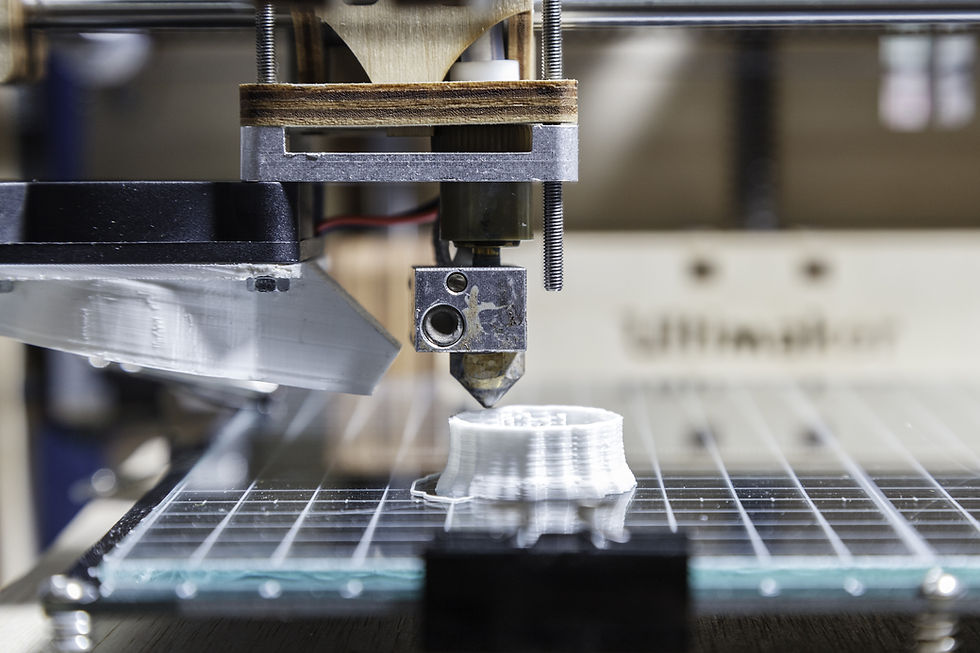Five Key Insights into Additive Manufacturing
- The CASTOR team

- Jun 1, 2021
- 2 min read
Updated: Mar 15, 2023
In the recent webinar, Save Costs With Improved Part Identification From CASTOR, Michael Petch, Editor-in-chief of 3D Printing Industry magazine, was joined by Omer Blaier, Co-founder & CEO of CASTOR and Werner Stapela, Global Head of Additive Design & Manufacturing at Danfoss, to discuss the opportunities and challenges associated with additive manufacturing.
Here are the five key takeaways from what proved an insightful discussion:
1. A lack of AM knowledge is hurting companies
The absence of advanced manufacturing knowledge and expertise in companies is a major barrier preventing them benefiting from the advantages and cost savings of additive manufacturing. Companies need to focus on training, which has become more widely available over the past two years. However, software can aid in the challenge of identifying additive manufacturing opportunities and has come a long way in recent years.
2. AM is (incorrectly) not seen as a driver of cost-reduction
Calculating the cost of 3D printing is not an easy task. Many companies do not consider 3D printing as an option to reduce costs, especially when it comes to low volumes. By scanning their existing Bill of Materials (BOM), companies can identify AM opportunities to lower the cost of manufacturing. Danfoss, for example, has millions of parts in its manufacturing facilities and uses CASTOR’s software to scan and identify opportunities, something which would not be possible to do manually.

3. Short-run production batches should be considered for AM
Too few companies take into consideration short-run production batches of hardware products for advanced manufacturing to reduce costs. Ultimately this means many OEMs are therefore failing to extract full value from additive manufacturing.
4. Non-sexy parts are a great place to start
The automotive, aerospace and medical devices sectors are currently the most advanced when it comes to additive manufacturing. However, the machinery, industrial equipment and energy sectors are rapidly uncovering the value of additive manufacturing. A key reason is the fact that there are less mission critical parts in these sectors and, as such, there is less need for certification regarding new methods of manufacturing parts. Non-sexy parts, like jigs, tools and fixtures, are the low hanging fruit that can quickly benefit from additive manufacturing.
5. At least 5% of your BOM is a perfect match for additive manufacturing
After analyzing 30,000 parts over the past year, CASTOR found the data it collected gives an accurate insight into what companies can expect when they analyze parts for additive manufacturing. Companies will likely find 70% of parts are not immediately suitable for additive manufacturing, as they stand. About 20% of parts identified will make sense to use for additive manufacturing with some changes, such as geometrical, materials or CAD file issues. And while 10% of parts will make sense to use additive manufacturing as is, about half of those will be sent to quote.
To learn more about how CASTOR can automatically analyze your product design files to help your organization discover additive manufacturing opportunities visit www.3dcastor.com.



If you have come to Haridwar for a visit and you want to romance here, then for that you have to contact our agency's website. This is a place where you will get the opportunity to romance with high profile girls of Delhi in Haridwar. You must avail this service once in your life. Haridwar call girls are available for you 24/7 hours.
If you want to make a memorable moment with Rohini escorts girls, then for this you should visit our agency website. Where you will get a chance to romance with an independent girl from Delhi and you can fulfill your sexual desires as you wish. You must call them to you.
You should stop your search right now if you're looking for a tour and travel company. it is supposed to put you at ease. Using our Delhidarshan website, you may reserve your transportation whether you like to see Delhi or the well-known locations in Agra. The bus tour from Delhi To Agra Bus Tour Package will offer you services at a fair cost.
Discover premium Delhi Russian escorts at delhi2ncr. Enjoy a secure, discreet, and unforgettable time with verified Russian models.
Searching for elite Delhi escorts? delhi2ncr brings trusted, verified escorts service in Delhi with prompt booking and complete privacy.